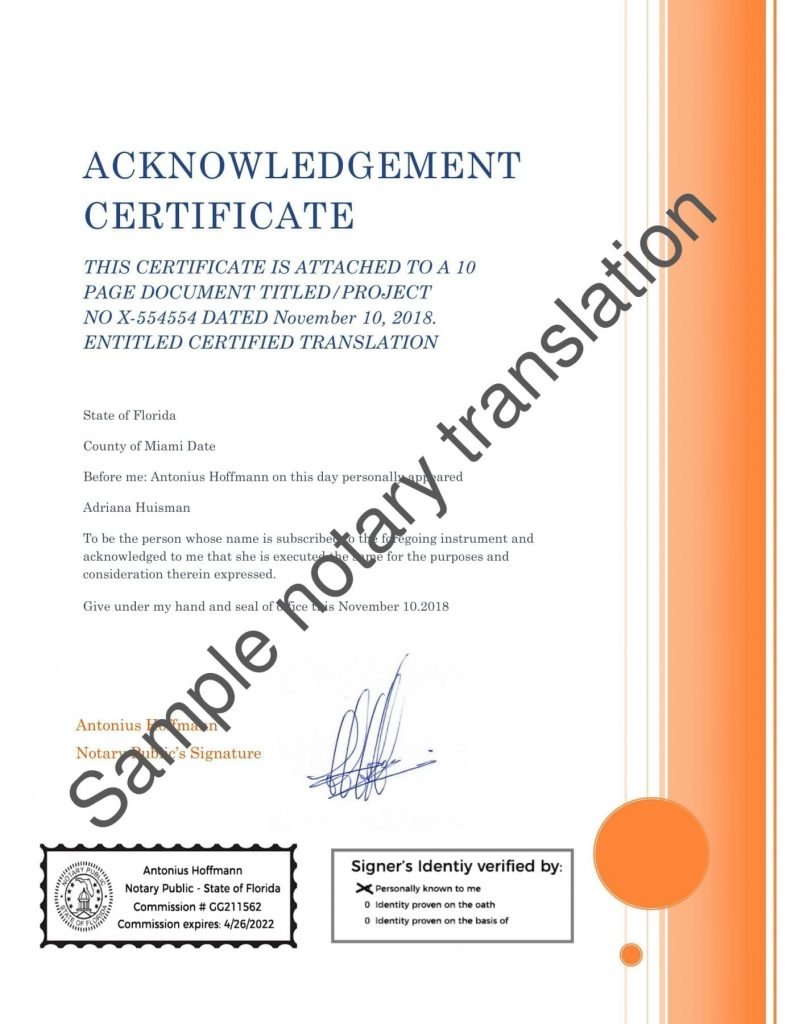
For daily business, such a translation is preferable. Notarization is also less costly because the translator does not compare documents in the same way as a certification. This is because agencies usually need one of these documents and not both. Do Translated Documents Need to be Notarized? In these present times, you do not need to go for both certification and notarization. It goes to another specialist for proofreading after this. Many businesses assign this task to the most qualified specialists. If the translator has ample experience and is well-qualified, translation tasks can be assigned to him. Although it is preferable to hire a certified translator for a certified document, it is not the only factor. This person also passes the test, proving his ability to work with a certain language pair.
#CERTIFIED TRANSLATION AND NOTARIZED TRANSLATION PROFESSIONAL#
Certified Translation and Certified Translator-The Difference A certified translator means that he has a professional degree from an educational institution with a major in translation. The point here is not to check the quality of the documents, but to show that the documents are usable in official agencies. He only examines it a little and puts a stamp on it.

On the other hand, the translator does not translate your documents when the translation is notarized. This is to make sure everything is correct. When a certified translator works on your document, he carefully compares the final as well as the source document. On the other hand, notarized translation is common for academic and similar documents. For example, acceptance of a legal document requires a certified translation service. Firstly, they differ according to requirements. The Difference between Certified and Notarized Translation There are some differences between certified and notarized translation. Moreover, the specialists can properly translate the documents and are accredited by the government. More importantly, since the translator is responsible for all the information of the document, a certified translation is legally binding.

This is why it is important to hire a person who can handle this translation. Only a skilled and certified specialist can do such a job. However, such a translation should visually match the original document. The translator has to write “not legible” for those parts of the original which are not clear. This is done along with dashes, marks, stamps, and signatures. In the case of certification, the entire original document is translated. This type of 'proof' shows that the document has a good chance of acceptance. A certified document, therefore, proves that the translation has been done by a professional Language Service Provider. It also shows that the translator is fluent in the target and source languages. Certified translation proves an accurate and complete translation.

This type of translation produces documents with their attested copy. What is a Certified Translation? Certified translation is used to prove a document's validity and correctness. Additionally, semi-legal and smaller documents require notarized translation. In case it’s not, the translator would be held liable for the wrong translation. Notarized translation is an act of double security guaranteeing that the information is correct. This means it is a third-party check that ensures that the translator completed his work and gave accurate results.

The identity of the translator is important in the case of notarized translation. After all this procedure, the translated document becomes valid. Thereafter, the translator also has to sign an affidavit containing all the official details such as the signature of the notary. The notary public, in turn, asks the translator to swear an oath proving the correctness of the translation. A professional translator submits the translated document to the notary public. Rather, it aims to fulfill the formal requirements of a certain authority or institution. What is Notarized Translation? Unlike certified translation, a notarized translation does not require high-quality translation. Here we take a look at the differences between certified and notarized translation and when to use them. While a certified translation aims to prove that a document is translated professionally, a notarized translation simply proves that the translation caters to law. However, there are certain differences between the two. Most people find it hard to distinguish between a certified and notarized translation. notarized and certified translation are two forms in which this proof is present. However, you may be needed to produce proof that you used the services of a professional translation agency if you want to translate your documents. Certified translation services translate documents along with other work. This is the reason why the translation of documents is so much popular these days. The world of translation and interpretation is a multi-diverse one.


 0 kommentar(er)
0 kommentar(er)
